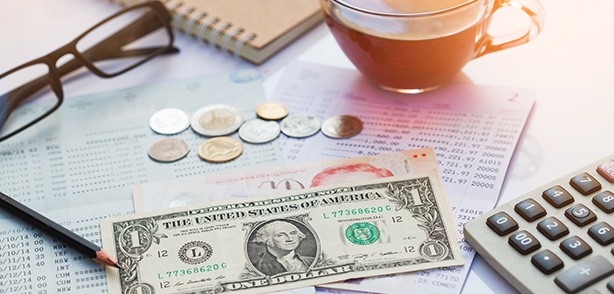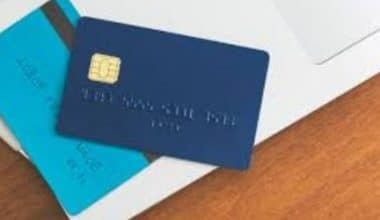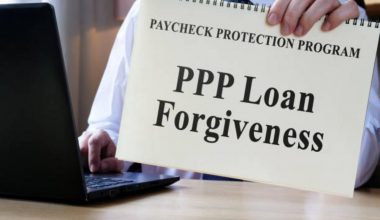An unsecured personal line of credit may be the ideal tool for you if you need to pay for emergency repairs, unforeseen bills, or temporarily manage your financial flow. But, exactly, what is a personal line of credit? Businessyield talks you through all you need to know about personal lines of credit, including the benefits and drawbacks, as well as what to look out for when applying so you can pick the one that best meets your needs.
What is a Personal Line of Credit?
A personal line of credit, often known as a PLOC, is a fixed amount of credit made available to you by a financial institution for a specified period. It’s often used by customers to consolidate debt, expand their business, pay medical bills, restructure current debt, repair their house, and other purposes.
A personal line of credit is a hybrid between a credit card and a personal loan. There are, however, a few distinguishing features:
- A personal line of credit allows you to receive funds in installments, whereas a personal loan is supplied in one single payment.
- Only the money you have drawn from earns interest.
- You may be able to draw on the money again once the line of credit has been fully paid off. This option is not always available and is subject to the lender’s discretion.
- There may be fees involved with applying for and maintaining the credit line, such as application fees or maintenance fees. This will differ depending on the lender.
What Is the Process of Obtaining a Personal Line of Credit?
Unsecured personal line of credit is an open-ended loan that allows the borrower to withdraw monies as needed for a predetermined period. The funds are accessible via bank transfers or line-of-credit checks. Also, the borrower is given a credit limit for the period of the loan that cannot be exceeded. Personal lines of credit with limits ranging from $1,000 to $100,000 can be provided.
When funds are withdrawn from the loan, interest begins to accrue immediately; interest is only levied on the outstanding sum until it is paid off on a predetermined repayment period. Borrowers typically make minimum monthly payments, much like credit card payments. The minimum repayment amount varies. However, it can be levied as a fixed fee or as a percentage of the debt outstanding, usually 1% or $25, whichever is greater.
Personal line of credit is often an unsecured loan, which means there is no collateral underpinning the loan and no recourse for the lender if the borrower defaults. Borrowers may be permitted to deposit collateral to obtain more advantageous terms, often a lower interest rate. A personal line of credit requires an annual or monthly maintenance fee to be established. Late and returned payments are also subject to surcharges.
Personal lines of credit often allow you to spend the funds however you see fit, as long as the total amount spent does not exceed the credit limit. Home equity lines of credit and company lines of credit are also available. These loans operate similarly to personal lines of credit, but have collateral backing the loan (home equity) or are restricted to specific expenses (business-related activities).
Important Characteristics of Personal Line of Credit
When it comes to choosing a lender for a personal line of credit, there are a few factors to consider.
#1. Range of credit limits
You should opt for a lender with a credit limit range that can be adjusted to meet your demands. Some lenders only provide personal lines of credit of a few thousand dollars, which may be insufficient for your specific project or price. Other lenders provide personal lines of credit of up to hundreds of thousands of dollars. These are often secured by collateral or require proof of income. Many personal lines of credit have a maximum amount of $20,000.
#2. Fees and rates are low.
Most lenders base their rates on the Wall Street Journal Prime Rate, but you should shop around to verify you’re getting the best price. Selecting a lender with low-interest rates and fees might help you save money and pay off debt faster.
#3. The term limit is indefinite.
Depending on your requirements, you may wish to opt for a lender who provides continuous term limitations with no defined end date for the credit line. This means you can continue to borrow from your line of credit as needed without having to reapply.
#4. Application and payment options that are adaptable
Not many lenders enable borrowers to apply and maintain their accounts entirely online, so look for lenders who do if this is important to you. If, on the other hand, you prefer to do your banking in person, you should look into banks and lenders with physical offices in your neighborhood.
Read Also: Company Credit Card: Company Credit Card and Policies
Repayment Structures for Personal Line of Credit
Borrowers should be mindful of the specific terms linked with their loan due to the market’s range of repayment plans. As previously stated, the majority of personal lines of credit will function similarly to credit cards. Other repayment arrangements, on the other hand, do exist and may be accompanied by heavy conditions. We’ve listed some less usual types of repayment below:
#1. Draw and repayment durations:
Personal lines of credit may have separate draw and repayment periods, allowing the borrower to withdraw funds during the draw period while requiring monthly payments during the repayment period.
#2. Balloon payment:
At the end of the period, a personal line of credit may require payment of the entire sum, which is known as a balloon payment. If the borrower is unable to repay the whole amount, balloon payments necessitate refinancing.
#3. Demand line of credit:
In rare situations, banks may offer a “demand line of credit,” which acts similarly to a conventional line of credit but allows the lender to call the loan for repayment at any time.
Personal Credit Line: Advantages and Disadvantages
When compared to other sources of quick capital, a personal line of credit offers various advantages, but it is not the best option for everyone. Before applying, consider both the advantages and disadvantages.
Advantages of Personal Line of credit
#1. Quick access to funds:
You can borrow money from a personal line of credit at any time during the draw period. Depending on your lender, you can get the line of credit through a bank branch, online, or via a mobile app.
Some banks will allow you to utilize a PLOC as overdraft protection if you are concerned about overdrafting an account. If you frequently write checks or are concerned about overdrawing your account, this can provide you with peace of mind.
#2. Rates that are competitive with credit cards:
A personal line of credit normally offers cheaper interest rates than a credit card. However, the interest rate on your PLOC will vary based on your lender and personal credit history.
#3. No collateral required:
Unlike other choices such as home equity lines of credit, which use your home equity as collateral, a PLOC does not. So, if you don’t have a home or a car to serve as collateral, this can be an excellent choice.
#4. Pay just for the draws you make:
With a PLOC, you don’t have to pay anything until you use your funds. You may withdraw funds in any quantity up to your limit, and you will only be charged for the amount withdrawn plus interest.
Disadvantages of Personal Line of Credit
#1. Higher interest rates than HELOCs:
A HELOC is a secured line of credit since your home is used as collateral for the amount owed. A Personal line of credit, on the other hand, is deemed unsecured because it lacks collateral. This means that the interest rate on a PLOC will most likely be higher.
#2. Interest is not tax deductible:
You cannot deduct interest on a line of credit from your taxes. This increases the cost of opening a PLOC.
#3. Poor credit and/or a short credit history make it difficult to qualify:
Because there is no collateral on a PLOC, the lender must rely on your word that you will repay what you borrow. This means that if you have a poor credit history, they are less likely to offer you a PLOC.
#4. Overborrowing risk:
Throughout the draw time, you can borrow up to your PLOC limit. However, when the draw period expires, you must repay the entire amount borrowed plus any interest that has accrued. You run the risk of overborrowing if you don’t have a repayment plan in place.
#5. Variable interest rates:
Because a PLOC typically has a variable interest rate, it is difficult to predict how much interest you will end up paying.
Typical Rates, Fees, and Terms
We’ve provided a list of commonly given rates, terms, and fees for personal lines of credit based on our research of the terms offered by several lending institutions:
| Average Interest Rates | Variable (based on Prime Rate), generally 9.30% – 17.55% |
| Term Range | 6 months – 5 years or flexible |
| Credit Limit Range | $1,000 – $100,000 |
| Average Fees | Annual maintenance fee: $25 – $50No check processing feeNo prepayment penaltyLate payment fee: $32 or ~7.5% of monthly payment past dueReturned payment fee: $25 – $39 |
| Repayment Schedule | Monthly |
How to Get a Personal Line of Credit
To qualify for a personal line of credit, you must have a credit score of 690 or above and a stable credit history. A track record of wages and proof of work is also required. Many organizations that offer personal lines of credit require that you have a checking account with them and that you apply through a regional branch, which limits your possibilities. The following are the most important requirements for a personal line of credit:
- History of payments: A track record of on-time payments suggests that you are a responsible borrower.
- Credit score: Credit agencies assess your credit score, which reflects your financial situation and chances of repaying loans.
- Financial situation: Your financial situation can include your debt-to-income ratio, cash on hand, and net worth, all of which represent your ability to repay loans.
Why should you (or why should you not) use a Personal Line of Credit?
Do you want to know if a personal line of credit is good for you? While a personal line of credit is a flexible and convenient way to borrow, it is not appropriate in all situations.
Who should think about a Personal Line of Credit?
If you have a large expense on the horizon but aren’t sure how much it will cost, you may explore a personal line of credit. For example, if you want to repair your home or finish a home improvement project, you may wish to apply for a personal line of credit to cover these costs.
Personal lines of credit often have lower interest rates than credit cards, but they may be more difficult to qualify for borrowers with weak credit.
Who shouldn’t think about a Personal Line of Credit?
If you know exactly how much you’ll need to spend on a project, a personal loan may be preferable to a personal line of credit. Borrowers can obtain a large sum and then repay it over time in fixed monthly installments with personal loans.
Personal lines of credit may not be the best option for borrowers who want to stick to a strict budget because they can provide the temptation to overspend.
Which Form of Credit Line is Best for me?
There are various types of credit lines (LOCs). A personal line of credit is one example. Each sort of LOC has its own set of advantages and disadvantages. Evaluating your scenario as well as the characteristics of each type of LOC will assist you in determining which type is best for you.
#1. Personal Line of Credit
If you have some unforeseen personal needs to cover in a short period but no collateral (such as a house or car), a PLOC may be the best solution for you. Because a lender is taking your word that you will repay what you borrow with this sort of LOC, PLOCs is often offered to people with good or exceptional credit.
#2. Business Line of Credit
A business line of credit and a personal line of credit are functionally equivalent in that you will be given a credit limit that you can draw on and repay as needed. Business lines of credit, on the other hand, may have higher limits and are tailored solely for businesses. A business may use a line of credit for a variety of purposes, including equipment purchases and short-term cash flow concerns.
#3. Home Equity Line of credit for (HELOCs)
The equity you’ve built up in your house is used to determine the amount you can borrow with a home equity line of credit. Unlike personal lines of credit, these loans are secured, which means that your home is used as collateral for the loan, and failure to repay the loan may result in foreclosure. However, because this sort of borrowing entails more risk, interest rates are frequently substantially lower.
How to Find the Best Personal Line of Credit
If you want to receive a personal line of credit, you will need two things: a decent credit score and a solid credit history.
“You want to have the best credit you possibly can,” says Dave Sullivan, credit consultant at People Driven Credit Union. “If you have any revolving lines of credit, pay them down as much as possible before applying, and make sure that information has been recorded to the credit bureaus.”
Although a personal line of credit (PLOC) may have higher interest rates than a home equity line of credit (HELOC), the interest rates on PLOCs are often far lower than those of a credit card cash advance or payday loan.
Check with several lenders to see who would provide you with the best rates. You should think about interest rates, repayment arrangements, and the length of the draw period.
The application process for a PLOC is similar to that of any other loan, and it is frequently conducted online. Once you’ve chosen a lender and the credit limit you want, you’ll need to supply information like your name, Social Security number, and employment and income information.
Best Unsecured Personal Line of Credit
#1. KeyBank: The Best Unsecured personal line of credit.
For its normal unsecured credit line, KeyBank offers a rather narrow range of rates ranging from 10.74% to 15.99%. While KeyBank’s isn’t the lowest unsecured rate available, the indicated maximum limit of 15.99 percent could enable unsecured borrowers with modest credit scores to create a sensible ceiling on their interest rates, making it one of the best personal line of credit in our opinion.
KeyBank also provides an unsecured small-dollar personal line of credit of up to $5,000. To apply with KeyBank, you must first open an account and live in one of the following states: Alaska, Colorado, Connecticut, Idaho, Indiana, Massachusetts, Maine, Michigan, New York, Ohio, Oregon, Pennsylvania, Utah, Vermont, or Washington.
Unsecured personal line of credit might not have the lowest interest rates available, but they are a viable alternative for borrowers with good credit but no collateral. Borrowers who cannot qualify on their own may seek a cosigner or co-applicant.
Drawbacks: KeyBank, like other regional banks, is not generally accessible to all qualified applicants. If KeyBank is not an option for you (either geographically or otherwise), consider the alternatives listed below.
#2. Regions Bank: The Best Secured Personal Line of Credit.
Because of its low APRs, flexible terms, and wide accessibility, Regions Bank is our top pick for the best non-home equity secured line of a credit providers. The lender offers the lowest APR range of any secured line of credit provider, ranging from 7.5% to 8.5%, and allows you to renew your credit line annually with no limit on the number of renewals.
Secured credit lines can be formed with as little as $250 or as much as you choose to deposit into your account (up to $100,000). You can also secure your line of credit with a Regions CD account, savings account, or money market account; interestingly, it also accepts applications from non-US people. Regions are also accredited by the Better Business Bureau.
For applicants with blemishes on their credit records, a secured line of credit is an excellent alternative. It enables borrowers to acquire low-interest rates on their credit lines while raising their chances of approval. However, if you fail to pay your bills, lenders would have the authority to confiscate the collateral.
Drawbacks: Borrowers who live beyond the Region’s 15 states of operation will have trouble acquiring a credit line because the line of credit applications necessitate a branch visit.
#3. PenFed: The Best Personal Line of Credit for people with terrible credit.
Pentagon Federal Credit Union (PenFed) is our top pick for lines of credit for consumers with terrible credit. PenFed and other credit unions are typically more willing to work with members who have bad credit to develop acceptable lending terms.
It’s easier than you think to join: Anyone who wants to start a savings account with PenFed can do so with just a $5 deposit. As a credit union, its annual percentage rates (APR) on all loans and lines of credit are limited to 17.99 percent, unlike other banks, which may charge higher rates. PenFed members with poor credit can improve their applications by acquiring a cosigner.
PenFed’s line of credit has a higher interest rate than many of its competitors, but it has the advantage of being a fixed rate, which isn’t usually available elsewhere. This guarantees that your interest rate will not change for as long as your line of credit is active. To apply, interested applicants must first join PenFed.
Drawbacks: Because credit lines are normally allocated for consumers with higher credit histories and ratings, PenFed candidates may still be refused. We also recommend KeyBank above for borrowers who do not wish to join a credit union or do not qualify with PenFed: It does not specify credit conditions and accepts cosigners and co-borrowers.
Summary of our Top Picks.
To provide a quick comparison, we have summarized our best firms for personal lines of credit in the table below. See the methodology section below for more information on how we evaluated each supplier.
| Best for… | Lender | APRs | Loan Amounts |
| Unsecured line of credit | KeyBank | 10.74% – 15.99% | $2,000 – $50,000 |
| Secured line of credit | Regions Bank | 7.50% or 8.50% | $250 – $100,000 |
| Bad credit | Pentagon Federal Credit Union | 14.65% – 17.99% | $500 – $25,000 |
Our Method of Selection
To find the best personal lines of credit, we assessed over a dozen credit packages. We evaluated the following criteria during our review:
APRs that are competitive:
Personal lines of credit are available in both secured and unsecured forms. Many lenders will demand higher interest rates on lines of credit than on installment loans due to the inherent risk concerns associated with unsecured revolving credit.
Loan amount and terms:
The majority of personal lines of credit are arranged in cycles, with the APR adjusting monthly with the prime rate. Some lines may also be separated into spending and repaying periods. We assessed how much leeway each lender provided in terms of loan quantities and term lengths.
Fees:
An annual maintenance fee is charged by several lenders. Other lenders impose prepayment penalties on top of separate processing fees. This component was evaluated based on the size and frequency of incidental costs.
Access to lenders:
Many banks will not allow non-customers to acquire a personal line of credit. Depending on where you bank, this restricts your access to various lenders. This component was assessed based on the eligibility conditions and lender locations. You may be able to complete the entire application procedure online with some lenders.
Lender credibility:
We examined ongoing complaints made against each lender through the Better Business Bureau, as well as the company’s reputation. Ratings of “NR” may indicate that the company’s details were being updated at the time of our evaluation, or that the company was delisted due to BBB internal policies.
Alternatives to Personal Line of Credit
A personal line of credit is one of many solutions available to individuals seeking additional funds to achieve their objectives. However, if you are unable to qualify, do not despair. Consumers have various lending options open to them.
#1. Personal loans:
The most significant distinction between a personal loan and a personal line of credit is that a personal loan is a one-time transaction. The lender will issue the funds and expect repayment on a predetermined schedule.
#2. Credit cards:
A credit card is intended for short-term purchase financing, whereas a personal line of credit is intended for larger financial transactions and investments. Most credit cards have significantly higher interest rates than a personal line of credit, and if you don’t pay off your entire amount each month, you’ll face high fines and interest.
#3. HELOC:
A home equity line of credit is a type of loan that allows you to borrow money against the equity in your home. Because this is a collateralized loan, the interest rate will be lower than on a personal line of credit.
Can I increase the limit on my personal line of credit?
Yes, you may be able to increase the limit on your personal line of credit, but it depends on the terms and conditions of your credit line and the lender’s approval process. In general, if you have a good credit history and are making your repayments on time, your lender may be willing to increase your limit.
What is the impact of missed payments on my personal line of credit?
Missed payments can have a negative impact on your credit score and your credit history, and may also result in late fees or additional interest charges.
Can I use a personal line of credit for starting a business?
Yes, a personal line of credit can be used to finance a small business, although there may be other financing options specifically designed for small business owners that offer more favorable terms.
How long does it take to receive the funds after I have been approved for a personal line of credit?
The amount of time it takes to receive the funds after approval can vary depending on the lender, but usually it takes several business days.
Is a personal line of credit considered in a bankruptcy filing?
Certainly, a personal line of credit may be considered a debt in a bankruptcy filing and can be discharged as part of the bankruptcy proceedings.
What happens if I can no longer make payments on my personal line of credit?
If you can no longer make payments on your personal line of credit, your lender may choose to close your line of credit and demand immediate repayment of the outstanding balance, which could have a negative impact on your credit score and credit history.
Conclusion
A personal line of credit can be a terrific way to borrow money, especially for persons with good credit. It has adjustable terms and can assist with cash flow or large expenses.
Assess your demands and make sure you have the capacity in your budget for a new monthly payment before agreeing to any further borrowing. When you’re ready to apply, contact a few lenders to compare rates.
Personal Line of Credit FAQs
Is it hard to get a line of credit?
It can be tough to obtain a line of credit if you have poor credit. When you need money, seeking lenders who offer “bad-credit” lines of credit may not be your only — or even the best — option. Other types of credit may be worth exploring.
What credit score do you need for a line of credit?
An unsecured loan is a personal line of credit. That is, you are asking the lender to have faith in your ability to repay. To get one, you’ll need to have a credit score in the upper-good range — 700 or higher — as well as a track record of being on time with debt payments.
Is it easier to get a loan or a line of credit?
When opposed to credit lines, personal loans are easier to budget for. Lines of credit, on the other hand, can provide you with borrowing flexibility. You can borrow up to your credit limit, refund the amount, and borrow again as needed with a line of credit.






